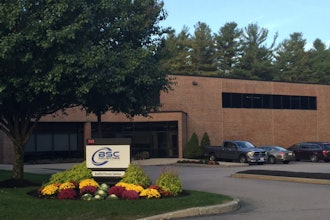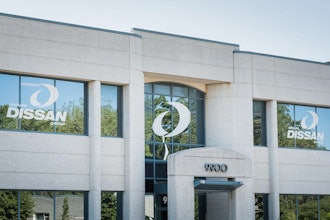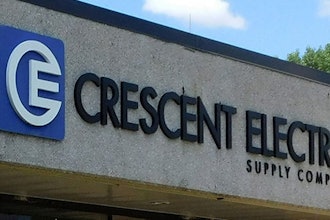
It’s easier to do what we are told than to think about what we are doing. Every decision is a risk. Our business environments and standardized practices steeped in policy encourage us to keep our heads down and charge ahead. But, real problem solvers use their intellect.
There is a message that I have tried many times to convey to colleagues, associates, peers, friends, and employers. It’s challenging because it is such a large and broad idea that it’s difficult to simplify into a platitude or simple fable.
I’ll start by explaining that one of the greatest failures of many improvement efforts is also the greatest failure of many failed product designs and struggling or failed businesses. We get so caught up in the quest to improve something that we forget to maintain our focus, or even set our focus, on the truly important elements.
This phenomenon manifests in two critical ways and consequent failure modes. The first is that we improve that which does not need improving, or at the cost of what is truly critical. The second is a failure to make a decision, or to make a decision with the proper perspective.
Another way to say it is that we get so focused on what is important to, or easy for, our own little piece of the world, that we lose sight of what the business needs or the customer sees valuable. Additionally, because we don’t consider the picture beyond our own little puzzle piece, we either don’t feel comfortable making a decision, or we make poor decisions.
As I said, I don’t know how to make such a broad concept easy to convey except to share a myriad of real examples to try and demonstrate the breadth and coincident simplicity of the mistake. So, here we go.
Example 1: a process improvement example
Consider a production process, where a combination of substances is baked into a structure that becomes the final product. The preparation for the baking process is very time consuming and requires a great deal of labor. It also creates a clearly wasteful byproduct because the substances are combined in a disposable paper or foam “boat” or fixture that holds the proper amount to be baked for each individual portion for final product.
This process design is an “improvement” over the previous process in that the product is portioned out before baking; whereas, the previous design, separated out portions after large quantities were baked in larger tubs. The previous process did not require as much throw-away material, so the cost of wasted material has gone up with the process change.
As a lean advocate, looking at the waste produced by the new process, the impulse is to try and devise a way to eliminate the disposable “boats.” A quick look at some basic numbers reveals that re-useable boats cost more in maintenance and cleaning, and require more floor space and capital equipment than the disposable ones.
Waste from disposables can be economically mitigated by either recycling paper “boats” or by compressing and cooking foam trays. One thousand foam trays can be fused into a solid block about the size of a pair of shoeboxes for less energy and with smaller, cheaper equipment than washing re-useable trays. Also, washing produces waste in the form of polluted water rather than paper or foam solids; it’s a trade.
However, the real lesson is elsewhere. While we would all like to eliminate the use of trays and the production of any waste, the economic cost of that waste is miniscule compared to the potential revenue increase and the measureable reduction in post-baking processing and overall process time to make the product; in other words, while the obvious opportunity is to eliminate the physical waste, that physical waste is a small thing compared to the productivity improvement it enables.
It is a fallacy to eliminate the obvious waste at the expense of the productivity improvement it facilitates. But, the first reaction of everyone that looks at the process is to re-hash the numbers for that waste and try to show how costly it is and to recommend eliminating it by post-processing. The minute the collective process knowledge owners lose sight of the whole process equation, the recommendation will be executed and the process will revert to a poorer, more costly, performance.
It is important to understand what metric represents what is most important and to maintain that focus. As process improvement agents, we must always remember to consider what is best for the whole process, not just the piece in front of us, or just the most obvious opportunity.
Example #2: forgetting what is at stake
A group of engineers is asked to look for opportunities within its realm of influence to cut costs for the business. One suggestion that is accepted and put into motion is to change to a re-useable, universal test fixture.
The incumbent method is to custom-build a mounting fixture for each and every new design to be put through dynamic testing. It costs around $300, give or take, for each fixture, for each test. A handful of tests are done each year, so a $1,200 re-useable and adjustable fixture would pay for itself after less than a year and save a couple of thousand dollars a year after. Sounds like a winner, maybe.
Here is the important business risk that wasn’t considered. It costs somewhere in the neighborhood of $10,000 to $12,000 to conduct each test. Recall that the tests are dynamic tests, often resulting in the destruction of the test samples. They are extremely harsh and the re-useable, adjustable fixture must repeatedly survive these tests.
To be adjustable, the fixture was constructed of channels, tracks, and slotted holes with numerous bolts and wing nuts. The engineers simply couldn’t get it to be solid enough to complete the dynamic tests without falling out of adjustment. The test would be invalidated by the failure of the fixture.
The engineering manager and engineering team made a judgment mistake by deciding to risk $10,000 tests to eliminate the cost of a $300 fixture. They lost focus on where the real expense and risk was. It costs a great deal more to re-test than to build a throwaway, but foolproof fixture.
The good news is they never did use the re-useable fixture, because they recognized the problem before finding out the hard way. However, if they had just considered the potential savings in perspective of the real costs and the risks of incurring those costs they might have saved themselves the trouble and expense of building their prototype.
Example#3: didn’t consider the problem
NASA engineers spent three years designing a treadmill for the international space station. It never went into space. To dampen the vibrations of a person running on a treadmill, and prevent damage to the fragile station, they had to make it so heavy and bulky it was impractical to launch into space or find room for it.
Vibration is only one challenge to overcome. How do we power a treadmill in an environment where electricity is in limited supply? How do we keep an astronaut on the treadmill in zero gravity? How do we make it small enough to fit in a very constrained space? How do we make it light enough to ride on the shuttle or rocket for delivery to the station? That’s only a few.
I presented this problem to some third, fourth, and fifth graders at an elementary school discussion on problem solving. One astute fifth grader asked the all-important question. “Why were they building a treadmill for the space station?” Why, indeed! Why didn’t the NASA engineers spend more time answering that question?
The fourth graders decided that a hamster wheel would at least solve the energy and vibration problems and would work the arms as well as lungs and legs. The third graders decided that exercise bands (giant rubber bands) would solve every problem and produce a good workout. The fifth graders decided that spring-powered exercise equipment would be a better starting place than a treadmill.
Why did elementary school students come up with better, more probably successful concepts than NASA engineers? I led them to focus on the real problem: astronauts need exercise in zero gravity. Not, “Astronauts need a treadmill.”
Sometimes we get so focused on solving the problem presented to us that we don’t take the time to consider the real problem. Admit it, in one context or another we have all done it. We must step back and, before we begin, make sure that we are focused on the real issue, not just the one presented to us.
Example #4: failure to make a decision
Years ago, I led a collection of engineers, managers, marketing leaders, and quality and production personnel through a value analysis of a new product concept. The business had decided to modify existing product designs to compete in a different market segment.
We had just completed competitive teardowns of the competitor products in this market and were finalizing our project objectives and product concept based on our analyses when the program manager indulged me and allowed me to map out our findings and our plans into the value analysis chart.
Everyone engaged in the teardown analysis and project plan meetings and, therefore, also in the value analysis, agreed that the analysis was well done and we agreed with the results.
Our analysis clearly showed that our product concept was not distinctly better than the competition’s existing products, and that at least one competitor would sell at a lower price. It was obvious that we needed to identify at least one feature or function that the competition didn’t offer, or to outperform the competition in at least one important aspect, if the product was going to capture any market share. We discussed it at length.
We proceeded with the design and development of the new product without addressing the findings of our value analysis, in spite of the fact that almost every project team member was part of the analysis. It was easier to do what we were told and to march toward a deadline, than it was to discuss changing our marching orders. The product didn’t meet the revenue needs or expectations of the business.
For my part, I pressed the issue until I was told to drop it or face consequences. It’s not easy to change directions once we start, but it sure is easy to waste a great deal of energy and resources and time working on a project set up for failure. We must be courageous and make hard decisions instead of easy ones if we are going to change culture, change behavior, or make business improvement.
It’s easy to decline to make a decision and let the blame fall on the one who did, but that’s not a helpful behavior. We absolutely must check our own attitudes and behavior and must not fall into that trap. Then we must expect our peers, our leaders, and our personnel to do the same.
I witnessed a major in the U.S. Marines once tell a bunch of boy scouts, “Never be afraid to be the only one to do what’s right.” Those are true words of wisdom.
Example #5: focused on easy for me, instead of best for business and customer
A customer has opened a supply contract up for bid among competitors. The incumbent business finds itself in the unfortunate, and uncomfortable, position of having to bid for a contract it has had for many years.
One very expensive and difficult aspect of the industry is that the product must be certified and qualified with an industry regulatory agency in order to be sold, and the customer must have traceability for that certification to use that product as a component for its products. Naturally, there is a significant amount of red tape involved.
While discussing that particular challenge and how to make things easier, the proposal team, along with engineering and certification advisors, decided to bid the contract with new part and model numbers to create a clean break in product history and simplify documentation and red tape.
Overhearing the outcome, one individual who had not followed the group discussion into a fixation on what was easiest for the individuals, stepped forward and pointed out the mistake from a business perspective. The single greatest advantage the business had as the incumbent on the contract was that the existing model numbers and part numbers were already certified.
If the business simply made a revision change to existing models to accommodate the new performance requirements then the customer could avoid tens of thousands of dollars in re-qualification process and testing that comes with changing the model numbers. Also, since only the changes need to be qualified, the process would take a few weeks instead of several months.
The greatest advantage the business has for reclaiming the contract is the preservation of the model number. The person intervening still had her mind on what was best for the customer and, therefore, the business, while the others on the proposal team and those advising them, had fallen into the trap of considering what is easiest for them.
We fall into this trap all the time. In fact it’s very similar to the mistake of the first example. We only look at a single piece, not the whole equation. In this case, we focus on our own piece without thinking about the real focus, the customer.
Summary
So what do these examples have in common, and what’s my point? In each of these examples, we saw individuals or teams that lost perspective, or failed to achieve perspective, of what was really needed, what was really intended, or what was really important. The failure is in blindly doing what we are told, neglecting to ask why something is the way it is, forgetting what is most important, or in fearing to make a change or a decision.
All of those failure modes are brought on by the impulse to do instead of think. Thinking about our actions before acting is a difficult thing to explain, and an even more difficult thing to teach. After all, if we all had a magical crystal ball to see into the future, the world would be much different.
The best advice I have to offer is this. Make a habit of asking questions like the following as a matter of daily or hourly course.
- What is the real problem?
- Why am I doing this? What’s the real intent?
- Before I change this, do I understand why it is the way it is?
- What is best for the customer/business/process?
- This helps whom?
- If I (or he or she) don’t want to make this decision, why is that?
- What’s the right thing to do?
- What’s the most important thing?
Try to keep perspective with regard to every action and decision. Focus on what is most important, rather than what is easiest. Keep in mind that we are hired not to get tasks done, per say, but to solve problems. Problems are solved best when we think, not just when we do. Our best asset is our ability to think things through.
After all, are we really paid the salaries we have, especially those of us with considerable experience, to shut up and do what we are told? Or are we paid for our experience because we are expected to use that experience, that wisdom, to make better decisions? Hopefully, you agree that we are the latter. If so, then we are paid to think and solve problems, not ignore them or avoid them, regardless of what the environment might enable or encourage.
Become more effective by thinking about your actions and assignments. Focus on intent and that which is important before getting caught up in instructions or what is easy. When you have mastered this for yourself, begin working on your coworkers. Help them to do the same.
Stay wise, friends.
If you like what you just read, find more of Alan’s thoughts at www.bizwizwithin.com.


















